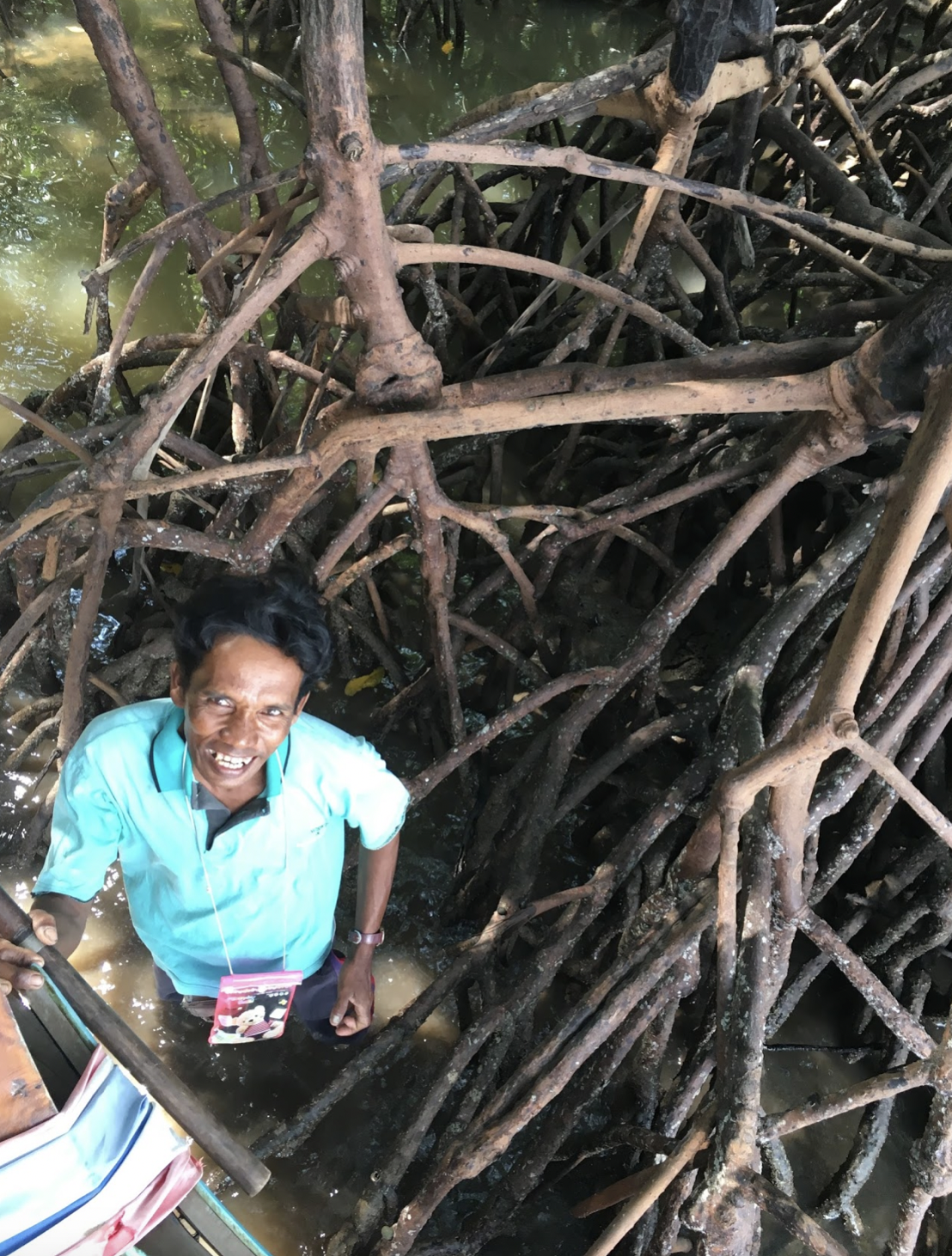An increasing number of high impact scientific literature documents the global significance of mangrove forests. We often read about the importance of mangroves for supporting biodiversity of our oceans and for mitigating the effects of climate change as the trees take up carbon from the atmosphere and store it in their soils and biomass. But hundreds of thousands of people live within or near to mangrove forests in tropical regions and they depend greatly on the local services provided by them. Why are mangroves so special for these communities?
I recently spent time as part of my PhD research with a mangrove community on Koh Klang, an island situated near to Krabi town, on the western coast of peninsular Thailand. This region is home to the third largest expanse of mangroves in Thailand. I wanted to find out how these forests are used locally and why they are important for so many people. Here, I provide a snapshot of some of the things I learned.
One of the most overwhelming things I found was that regardless of occupation or age, this community held great knowledge of mangrove forests and their value. The tangled roots of mangroves provide a unique sheltered habitat for hundreds of species of fish and shellfish. Many villagers spoke about how mangroves provide safe places for these species to breed and grow. One villager described how, “you can find some marine animals in the mangrove forests: crabs, fish, shellfish, and shrimps, but the sizes are smaller than the ones you catch from the sea. The mangrove forests are like their shelters to hide themselves before they are strong enough to go into the sea. It’s not safe for them to go out in the sea if they are not strong enough. Every mangrove forest is like a safe home for marine animals”.
Harvesting marine animals from the forests for food is crucial for the people living on Koh Klang, and different tidal stages provide a different diversity of species, as one villager explained, “Periwinkles, babylonia, and mangrove snail are found in the mangrove forest. People go collecting periwinkles at high tide and babylonia at low tide”.
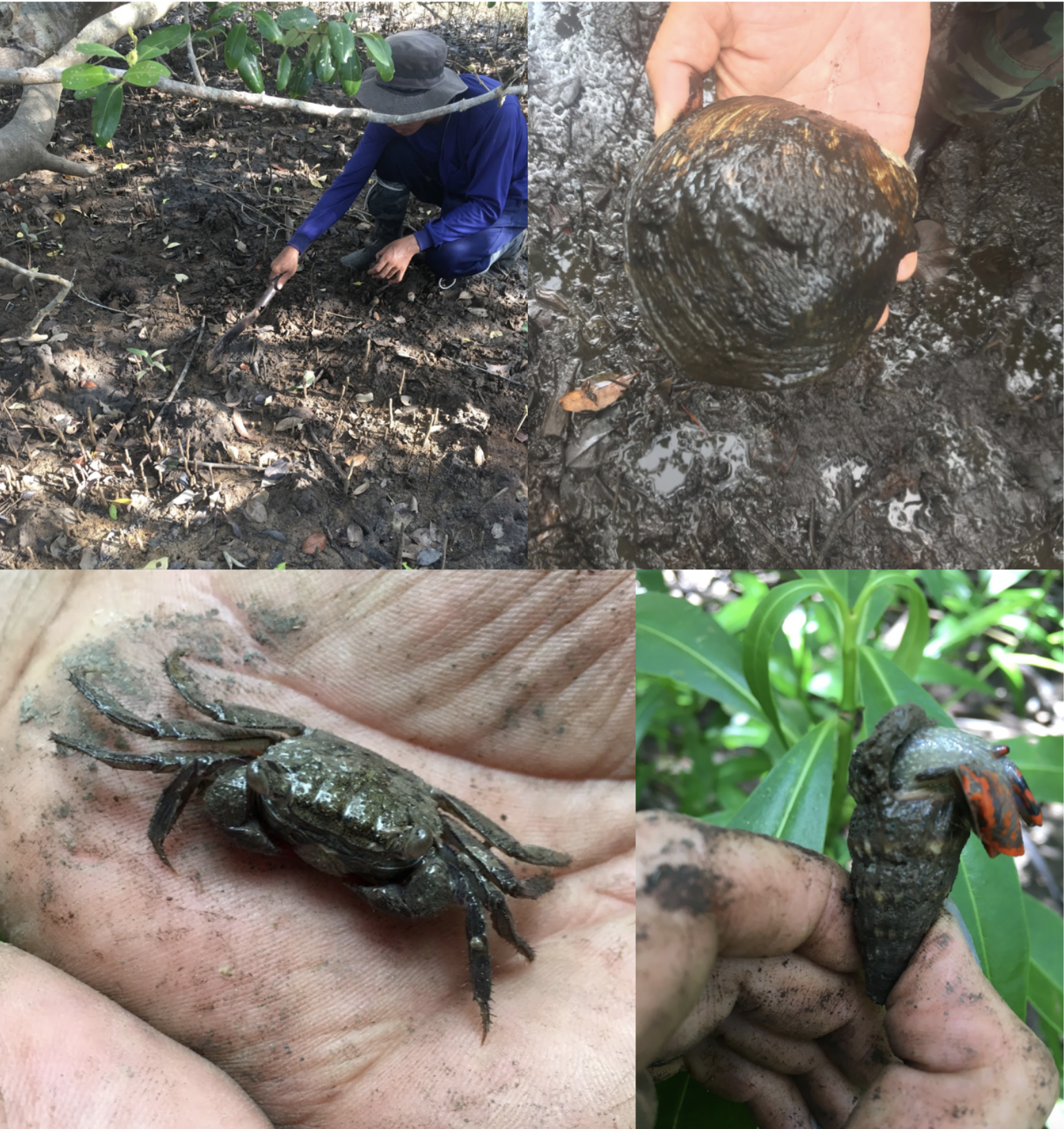 Photo: Harvesting mangrove clam at low tide (above), mangrove fauna (below).
Photo: Harvesting mangrove clam at low tide (above), mangrove fauna (below).
Mushrooms are another wild food source which villagers harvest from the mangroves on Koh Klang. One villager described how dead Excoecaria agallocha trees provide conditions for their growth, “Schizophyllum (splitgill mushroom) grows from the tree when it dies. It grows from the mutar (Excoecaria agallocha) trees that have fallen down. If it grows from this tree then it’s tastier. This mushroom is quite expensive, 250 baht per kg”.
The people of Koh Klang also referred to the cultural value of the forests in supporting biodiversity through the provision of habitat for a wide range of reptiles, birds and mammals. The aesthetic value of mangroves also provides opportunity for ecotourism, which is currently a growing activity on the island.
Villagers have been helping to restore degraded forest on the island in recent years. They explained how they have observed positive changes in marine life as a result of forest restoration. One villager told me that, “The mangrove forests were destroyed. We solved this problem by planting more seedlings back to the forest. Students from schools on Koh Klang also came to help plant mangrove trees. We replanted more trees back to the forests and marine animals have started to come back”.
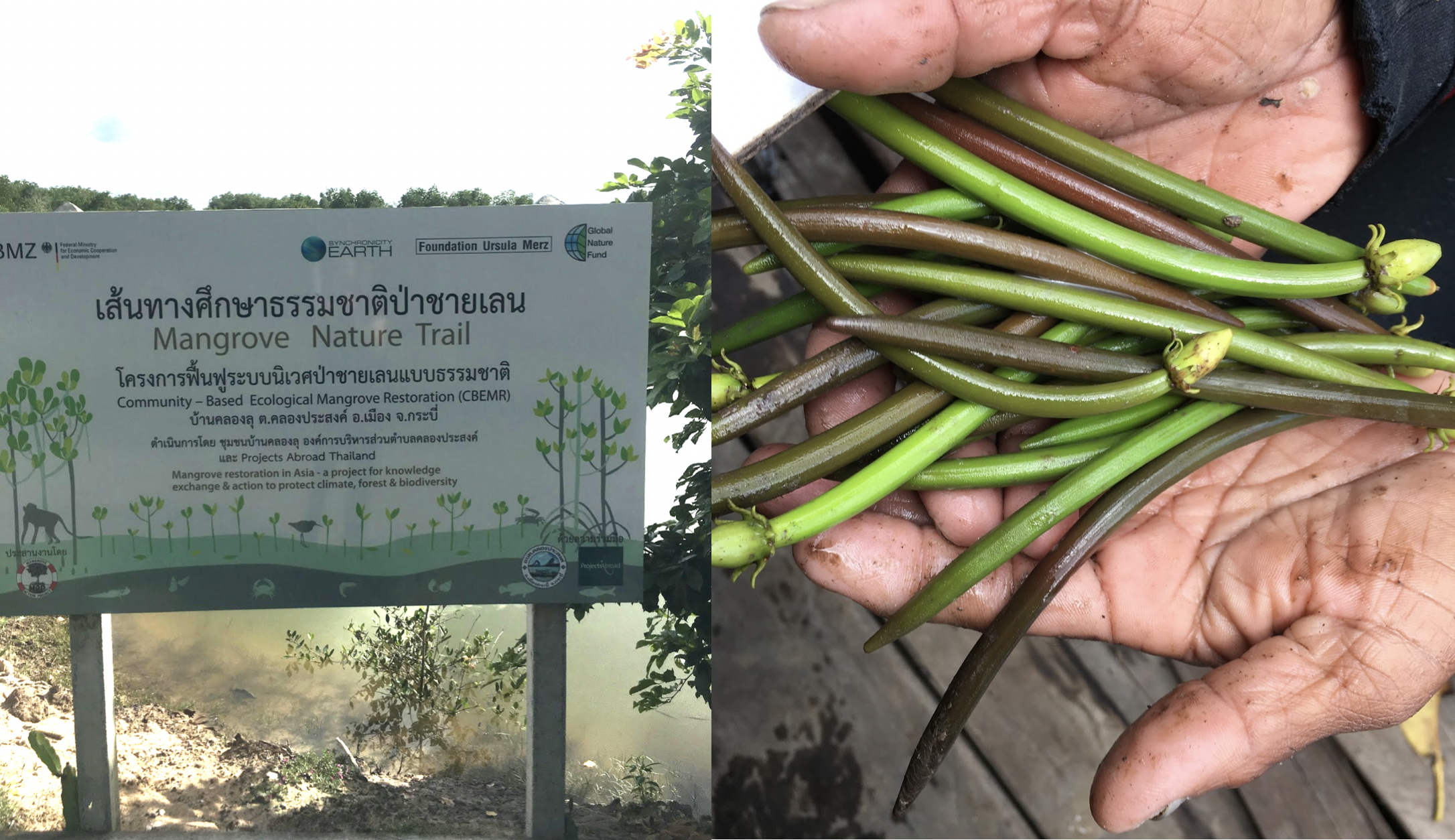 Photo: Ecotourism on Koh Klang (left), Rhizophora propagules collected by villagers for restoration projects (right).
Photo: Ecotourism on Koh Klang (left), Rhizophora propagules collected by villagers for restoration projects (right).
Villagers also discussed mangrove uses in relation to a wide range of tree species. Koh Klang has an expansive coastal zone and the intertidal mudflats are a particular focus for traditional fishing practices and shellfish harvesting. The local artisanal fishery is based on various fishing gears such as crab traps, squid traps, cast nets, and bamboo stake traps. Avicennia species are used for making fishing traps, as one villager explained, “We use the samae wood (Avicennia) in the mangrove forests for making fishing traps. Only small sized wood though, small tree trunks”. Whereas, leaves from the Nypa palm are used for making tobacco wrapper, dessert wrapper and for roof thatching.
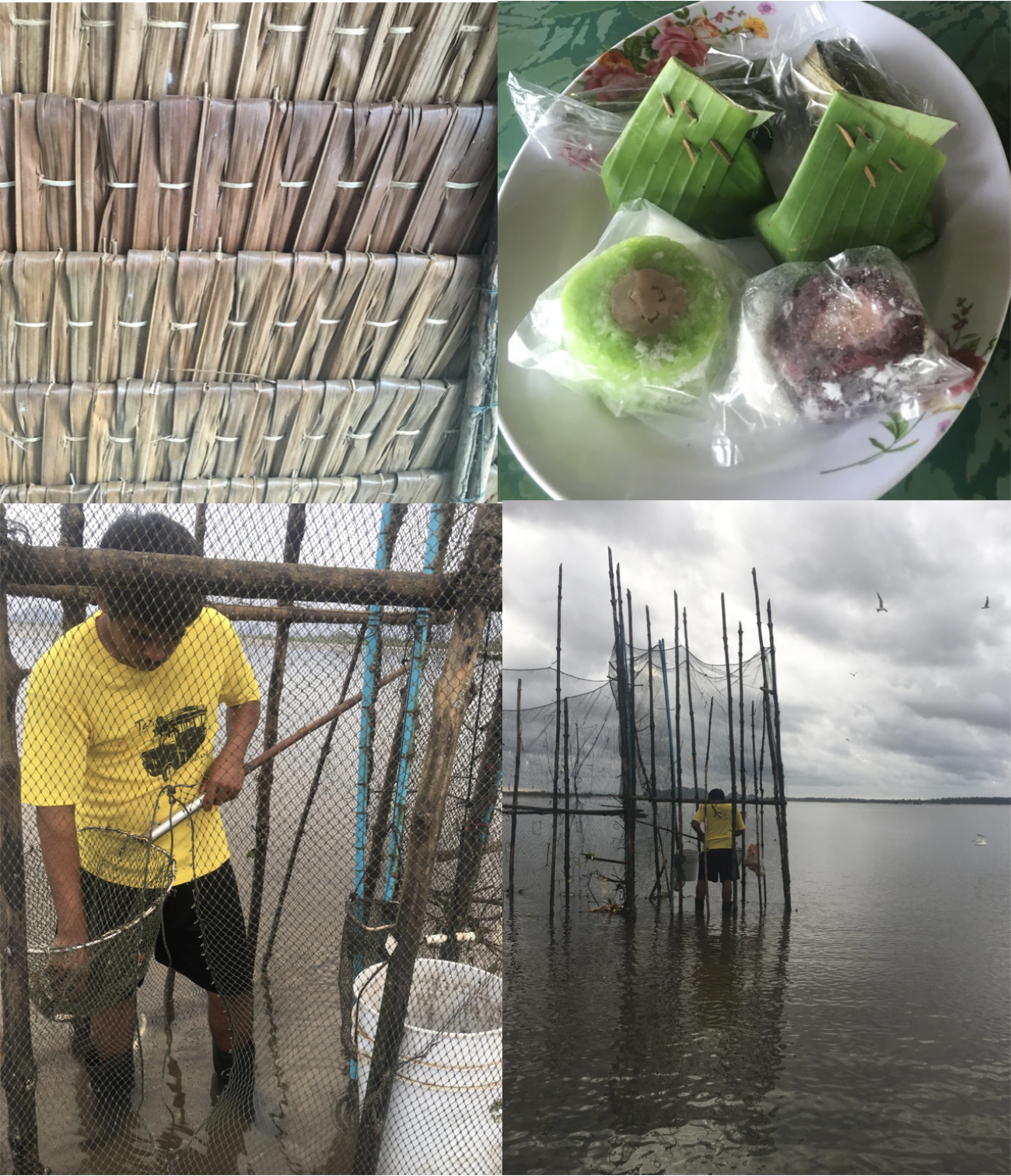 Photo: Roof thatching and dessert wrappers made from leaves of the Nypa palm (above), Avicenna poles used for making fishing gear (below).
Photo: Roof thatching and dessert wrappers made from leaves of the Nypa palm (above), Avicenna poles used for making fishing gear (below).
As climate change threatens to increase the frequency and severity of storms, mangroves provide a shielded defence for communities against storm surges and ocean waves. Some of the villagers I spoke to referred to the importance of mangroves in protecting the community on Koh Klang. They used the 2004 Indian Ocean tsunami event as an example, as one explained, “The mangrove forests around the island reduced the impact of the tsunami, so our Koh Klang wasn’t damaged too much. There are many mangrove channels protecting the villages from big waves”.
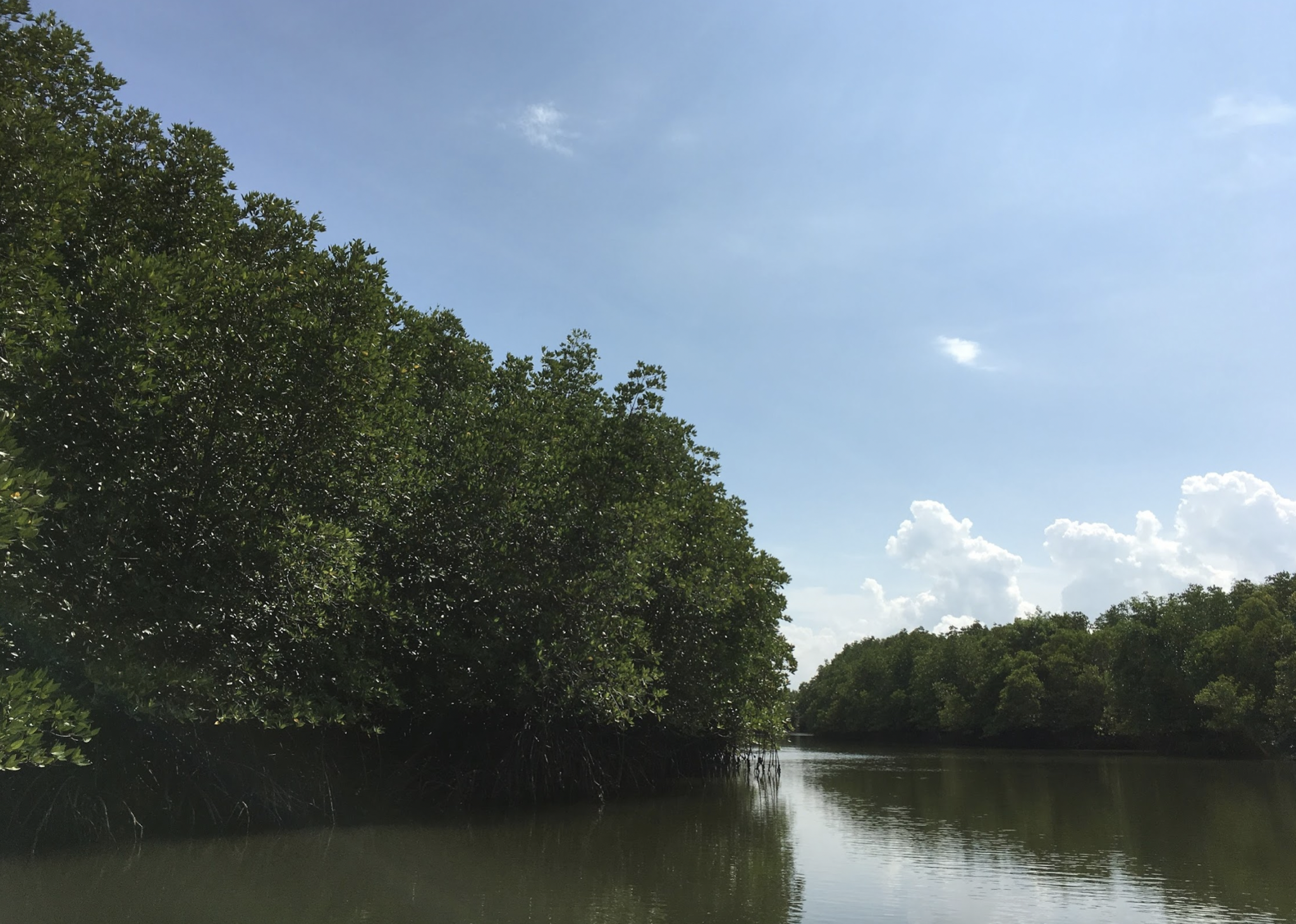 Photo: The protective function of mangroves.
Photo: The protective function of mangroves.
It was clear from my time spent with the people of Koh Klang that the mangrove forests are an integral part of their livelihood. It is important to understand how local people value these forests in order to better know how to manage them in a way that maintains the specific benefits that thousands of communities rely on throughout the tropics. One of the most special things about mangroves is that all of these benefits are given for free.
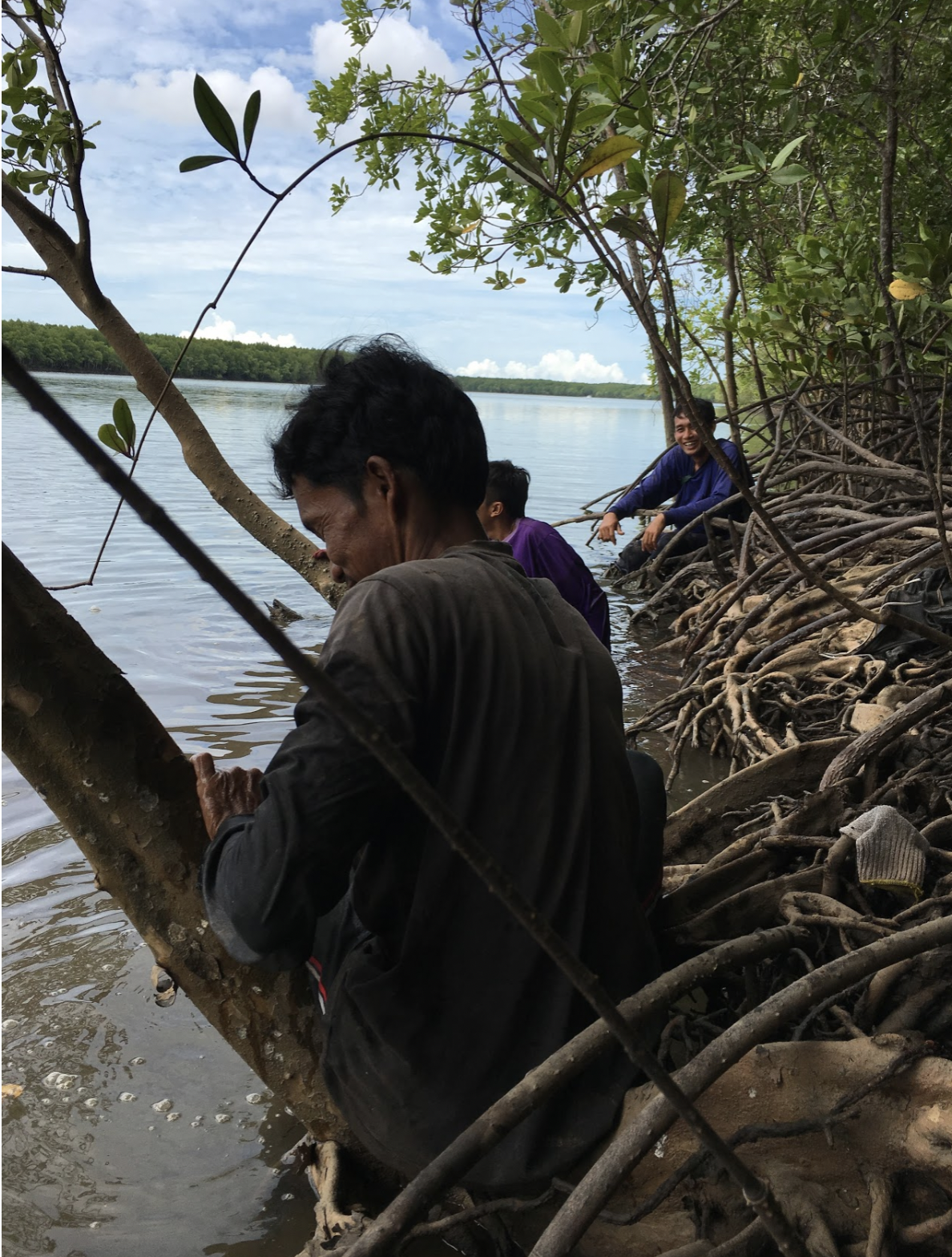 Photo: Villagers of Koh Klang.
Photo: Villagers of Koh Klang.

